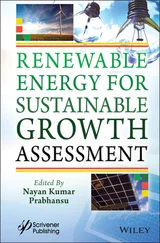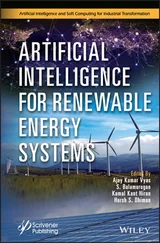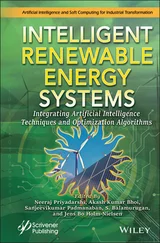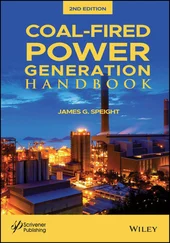Aerosol particles have a lifetime of up to several weeks in the troposphere and occur in highly variable concentrations A large proportion of the particles that influence cloud processes and the radiative balance is derived from gaseous sulfur-containing emissions.
See also: Pollution Control.
Bagasse is the fibrous residue remaining after sugarcane or sorghum stalks are crushed to extract their juice and is currently used as a renewable resource in the manufacture of pulp and paper products and building materials. Bagasse is a heterogeneous material containing approximately 30-40% w/w of pith fiber, which is derived from the core of the plant and is mainly parenchyma material, and rind or stem fiber, which makes up the balance of the material. Bagasse is often used as a primary fuel source for sugar mills. When burned in quantity, it produces sufficient heat energy to supply all the needs of a typical sugar mill, with energy to spare. In addition, a secondary use for this waste product is in cogeneration, the use of a fuel source to provide both heat energy, used in the mill, and electricity, which is typically sold on to the consumer electrical grid.
Agave plants are used for fiber (henequén) production in the Yucatan peninsula for tequila and mezcal production in southern, west-central, and western Mexican states; and also for producing a traditional fermented beverage called pulque, in the highlands of central plateau of Mexico, including agricultural areas within the limits of Mexico City. The agave bagasse consists of the tissue of the blue agave after extraction of the sap. It is the residual fiber from slaughterhouses remaining after cooked agave heads are shredded and milled and the sugars are water-extracted. The bagasse is primarily the rind and fibrovascular bundles dispersed throughout the interior of the agave head.
The availability and characteristics of agave bagasse including structure, fiber size, and absorbency suggest that agave bagasse would be a suitable bulking agent for composting and to determine a viable method for the biodegradation of waste by piling alternate layers of offal with agave bagasse as a bulking agent.
See also: Bagasse, Biomass.
Agricultural residues, which are a convenient renewable energy source, include straw, manure, vegetables, as well as fruit waste and general garden waste ( Table A-5). Other residues include potatoes and sugar beet tops as well as damaged fruit and nursery wastes, and use of agricultural waste reduces the possibilities for odor and water pollution by manure. Aside from their abundance and renewability, using agricultural residues will benefit farmers, industry, and human health and the environment.
Table A-5Examples of the Types and Bulk Composition of Agricultural Residues.
| Agricultural residue |
Cellulose |
Hemicellulose |
Lignin |
| Bagasse (sugar cane) |
32-48 |
19-24 |
23-32 |
| Bamboo |
41-49 |
24-28 |
24-26 |
| Cattle manure |
1.6-4.7 |
1.4-3.3 |
2.7-5.7 |
| Coastal Bermuda grass |
25 |
35.7 |
6.4 |
| Corncobs |
45 |
35 |
15 |
| Corn stover |
35 |
28 |
16-21 |
| Grasses |
25-40 |
35-50 |
10-30 |
| Leaves |
15-20 |
80-85 |
0 |
| Nut shells |
25-30 |
25-30 |
30-40 |
| Pig waste |
6.0 |
28 |
- |
| Rice straw |
40 |
18 |
5.5 |
| Sorghum (sweet) |
27 |
25 |
11 |
| Sorted refuse |
60 |
20 |
20 |
| Switch grass |
30-51 |
10-50 |
5-20 |
| Wastewater solids |
8-15 |
NA |
24-29 |
| Wheat straw |
33-40 |
20-25 |
15-20 |
| Wood (hardwood) |
40-50 |
24-40 |
18-25 |
| Wood (softwood) |
45-50 |
25-35 |
25-35 |
For example, until recently the excess straw produced was generally burned in the fields or ploughed back into the land. However, the environmental legislation put in place in many countries has restricted field burning and straw has been seen as a potential source of energy.
Dry residues include those parts of arable crops (such as corn stover, straw, and poultry letter) not to be used for the primary purpose of producing food, feed, or fiber, used in animal bedding and feathers. On the other hand, wet residues (which are residues and wastes that have a high water content as collected) include (i) animal slurry, (ii) farmyard manure, and (iii) grass silage.
Agriculture residues directly burned as fuel in the developing world include crop residues, forest litter, and also grass and animal garbage. Crop residues are more widely burnt than animal waste and forest litter. Crop residues encompass all agricultural wastes such as straw, stem, stalk, leaves, husk, shell, peel, lint, stones, pulp, stubble, etc. which come from cereals (rice, wheat, maize or corn, sorghum, barley, millet), cotton, groundnut, jute, legumes (tomato, bean, soy), coffee, cacao, olive, tea, fruits (banana, mango, coco, cashew), and palm oil.
Because agricultural residues are of a wide variety of types, the most appropriate energy conversion technologies and handling protocols vary from type to type. The most significant division is between those residues that are predominantly dry (such as straw) and those that are wet (such as animal slurry). Many agricultural crops and processes yield residues ( Table A-6) that can potentially be used for energy applications, in a number of ways. Sources can include: (i) arable crop residues such as straw or husks, (ii) animal manures and slurries, and (iii) animal bedding such as poultry litter.
Table A-6Examples of crops and crop wastes.
| Crops |
Crop wastes |
| Barley |
Straw, bran |
| Coco |
Hull, fiber |
| Coffee |
Pulp, husk |
| Cotton |
Stalk, lint, hull |
| Groundnut |
Shell, stalk, leaves |
| Jute |
Stem |
| Maize |
Stalk, leaves |
| Mango |
Peel |
| Millet |
Straw, bran |
| Palm oil |
Shell, fiber, fruit bunches |
| Rice |
Straw, husk, bran |
| Sorghum |
Straw, bran |
| Tomato |
Stem |
| Wheat |
Straw, husk, bran |
Forest litter is mainly constituted of dry fallen leaves. Plantations of those species widely used for reforestation or soil conservation/sand fixation such as Eucalyptus and Casuarina equisetifolia , provide an important biomass litter yearly. Animal garbage is livestock manure. Generally, dry animal wastes directly used as fuel are cow and camel dung, and sometimes that of horse and sheep. The quantity of manure produced depends on the amount of fodder eaten, the quality of fodder, and the live weight of the animal. The excrement-yield values vary among the species.
In many developing countries, most agricultural residues burned as fuel are used in their natural state with some pre-treatment like drying, and cutting, and compacting in rare occasions. Crop residues are characterized by its seasonal availability and have characteristics that differ from other solid fuels such as wood, charcoal, and char briquette. The main differences are the high content of volatile matter and lower density and burning time.
Читать дальше












